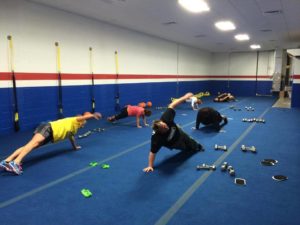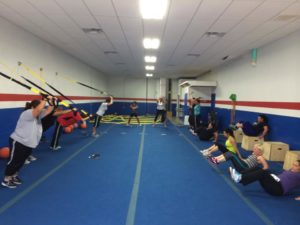Many exercises once considered safe are now known to cause injury. That’s right—what you learned in P.E. class years ago might actually be dangerous to your body. Chances are, you may still doing one or more of these stretches or exercises and don’t know the dangers they pose.
So what kind of exercise is risky? Any movement that feels unnatural, makes you feel pain or discomfort, requires more flexibility than your current range of motion, or leads to a muscular imbalance. When the risk for injury is greater than any possible benefit of the exercise, it’s probably not worth it.
The following stretches and exercises may injure your neck, back, or knees. Learn alternate, safer ways to get the same benefit.
Safe Neck
Ever roll your head all around in a circle? Probably not a good idea. When you roll your head back, it causes the neck to arch unnaturally and can hyperextend and compress the cervical spine, leading to nerve damage.
Another potentially hazardous movement for your neck is the plough. This is performed by lying on your back as you lift your legs over your head to the floor or rest on your shoulders and put your legs up in the air to do a bicycle. These two movements put undo strain on your spine and neck.
The old-fashioned way of doing curl-ups where you place your hands behind your head and sit up can also lead to neck strain. A safer alternative is the crunch. Lie on your back, bend your knees, and place your feet on the floor. Gently support your head with your hands, contract your abdominals, and lift your shoulders only four to six inches off the floor. Hold and then lower. Keep your neck and back aligned the whole time.
Many people don’t know how to correctly use the lat pull-down machine at the gym. If you were taught to pull the bar down behind your head, it’s time to do it differently. Unless you have very flexible shoulders, this movement can cause shoulder impingement or a tear in your rotator cuff. The bar may even injure your neck vertebrae. Work your lats safely by pulling the bar down toward your chest while keeping your back straight, abs tight, and slightly leaning back.
Safe Back
An injured back is a painful thing to overcome. Keep your back strong by avoiding the following:
• Double leg lifts—lying on your back and lifting your legs. This arches your lower back muscles and places a great deal of stress on them. The same goes for double leg raises (lying on your stomach and lifting your legs) and simultaneous leg and arm lifts while on your stomach.
• Stretches hazardous to your back include standing toe-touches, back bends, and hamstring stretches (crossing legs and reaching toward the floor). These all place excessive stress on your lower back.
• The inner and outer thigh machines at the gym aren’t the safest way to work your thighs. Overusing these often results in back and hip problems. Resistance bands and cable machines are better, safer alternatives.
Safe Knees
The knee joint doesn’t like heavy, prolonged pressure or tight bends. Therefore, avoid kneeling for long periods or deep lunges, deep knee bends, or the quadriceps (front thigh muscle) stretch where you lie on your back and bend your knees so your feet are next to your butt.
When you’re doing squats or the leg press machine, don’t let your legs bend too deeply. This can strain your back and injure your knees. Squats and leg presses are great exercises, as long as you don’t bend your knees past 90 degrees.
The seated leg extension machine at the gym targets your quadriceps but can be risky for your knees if you use too much weight or already have knee problems. It’s safer to just do regular lunges and squats to work your thighs.

